Breed Standard
Breed Standard of the Border Collie
If you would like to understand the Standard further, please take a look at the Extended Breed Standard
General Appearance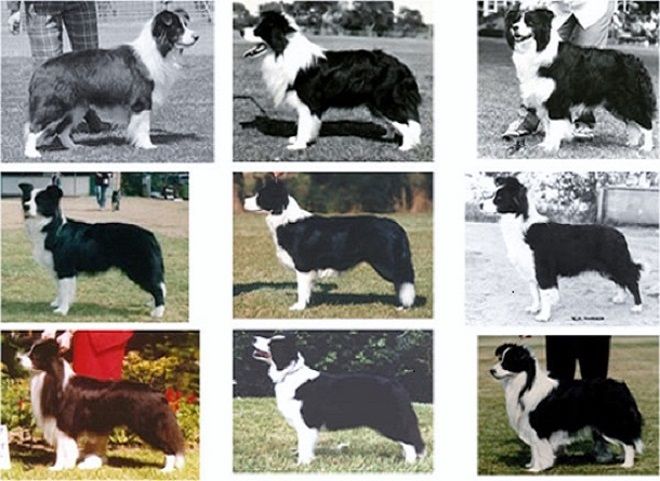
The general appearance shall be that of a well-proportioned dog. The smooth outline showing quality, gracefulness and perfect balance, combined with sufficient substance to ensure that it is capable of enduring long periods of active duty in its intended task as a working sheep dog. Any tendency to coarseness or weediness is undesirable.
Additional Information: The Border Collie is a moderate dog without exaggeration. Balance is not simply the relationship between fore and hindquarters; balance refers to the dog as a whole - from head proportions and carriage to correct set and carriage of tail. The height at the wither being in proportion to length from prosternum to rear point of buttock - 10:9. The body is moderately long, length being in the length of rib cage (rib cage carried well back) not the loins. The forelegs about half the height of the dog, the length of the head and neck always in balance to the whole of the dog, with correct set and carriage of tail.
Think about the phrases used in the description: Well proportioned…Smooth outline….Quality, gracefulness and perfect balance Sufficient substance ……. No tendency to coarseness or weediness
Characteristics/Temperament
The Border Collie is highly intelligent, with an instinctive tendency to work and is readily responsive to training. It's keen, alert and eager expression add to its intelligent appearance, whilst its loyal and faithful nature demonstrates that it is at all times kindly disposed towards stock. Any aspect of structure or temperament foreign to a working dog is uncharacteristic.
Additional Information: The expression comes primarily from the harmony of the correct eye shape, placement and colour and is complemented by the correct ear placement. A Border Collie’s temperament is stable, biddable and willing to please, steady with no sign of timidness or aggression.
Head
The skull is broad and flat between the ears, slightly narrowing to the eye, with a pronounced stop, cheeks deep but not prominent. The muzzle tapering to the nose, is strong and the same length as the skull. The lips are tight and clean and the nose is large with open nostrils. The nose colour in all dogs will be a solid colour with no pink or light pigment, and shall complement the background colour of the dog.
Additional Information: 
The size of the head and the length of head and neck should always be in balance to the whole of the dog. The standard is very specific: Skull and muzzle should be of equal length, stop is pronounced and the skull is broad and flat between the ears.
Eyes
The eyes are set wide apart, oval shaped of moderate size harmonising with the colour of the coat but darker colour preferred, except in the case  of chocolate where a lighter colour is permissible and in the case of merles where blue is permissible. The expression is mild but keen, alert and intelligent.
of chocolate where a lighter colour is permissible and in the case of merles where blue is permissible. The expression is mild but keen, alert and intelligent.
Additional Information: The eye colour should be brown (except in the case of blue merles) and while the ‘darker colour is preferred’ , this does not apply to all coat colours. Black dogs should have black pigment and medium to dark eyes. Chocolates will have a liver coloured nose and lighter brown to amber eyes. Blues will have slate coloured noses and lighter eyes. In this breed, reds can have either have liver noses with lighter eyes or black noses with darker brown eyes. Expression however is more important than colour, remembr the standard mild, keen, alert, intelligent'. Also think about size, shape and placement, remember the words, moderate, oval and set wide apart.
Ears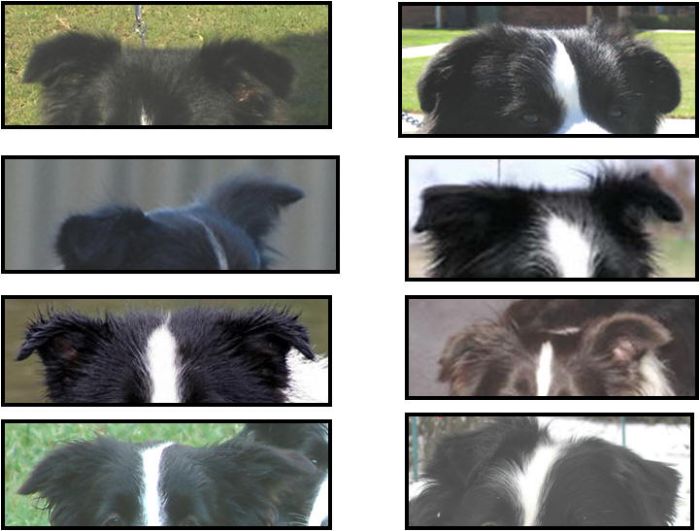
Medium size and texture, set well apart. Carried erect or semi-erect and sensitive in use.
Additional Information: The current standard is specific in terms of size, set and carriage, however, you will find a wide variety of ear carriage within the breed. Mobility in the ear, regardless of carriage, is important as is the correct ear placement and set. When assessing expression it is important to look to both the eyes and ears.
Mouth
The teeth should be sound, strong and evenly spaced; the lower incisors just behind but touching the upper, that is a scissor bite.
Neck
The neck is of good length, strong and muscular, slightly arched and broadening to the shoulders, without throatiness or coarseness.

Additional Information: Both the neck and tail should be used to balance the dog on the move. The reach of neck is important. The front feet of the Border Collie when gaiting, should reach to the nose of the dog, a short neck will see a short stepping or hackneyed gait. When a Border moves whether in a clean gait or when crouching, the dog should be able carry the neck and head at different levels.
Forequarters
The shoulders are long, and well angulated to the upper arm, neither in nor out at elbow. The forelegs are well boned, straight and parallel when viewed from the front. Pasterns show flexibility with a slight slope when viewed from the side.
Body
The body is moderately long with well-sprung ribs tapering to a fairly deep and moderately broad chest. The loins are broad, deep, muscular and only slightly arched, flanks deep and not cut up.
Hindquarters
The hindquarters are broad and muscular, in profile sloping gracefully to the set on of tail. The thighs are long, broad, deep and muscular with well-turned stifles and strong hocks, well let down and when viewed from the rear are straight and parallel.
Feet
Oval in shape, pads deep, strong and sound, toes moderately arched and close together. Nails short and strong.
Additional Information: A strong working foot able to endure all terrains and working conditions. There should be no weakness at all.
Tail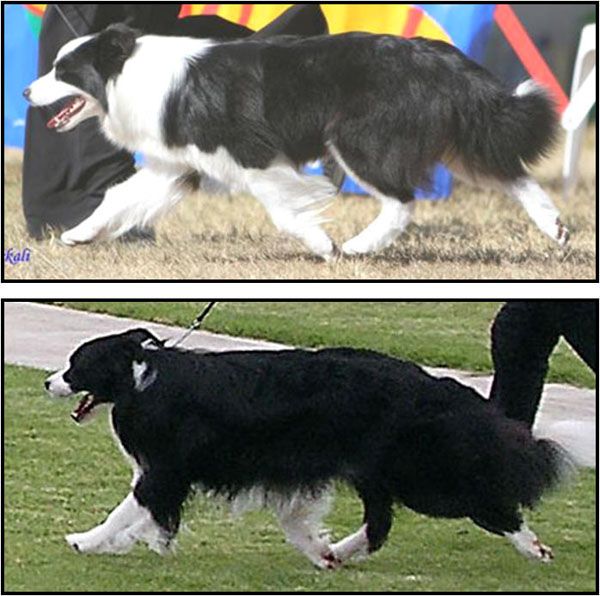
The tail is moderately long, set on low, well furnished and with an upward swirl towards the end, completing the graceful contour and balance of the dog. The tail may be raised in excitement, but not carried over the back.
Additional Information: Tail is set as a continuation of the spine and should reach the hock in length and used like a rudder to balance the dog on the move. Refer photos in the movement section for examples of correct carriage on the move and the upward swirl.
Gait/Movement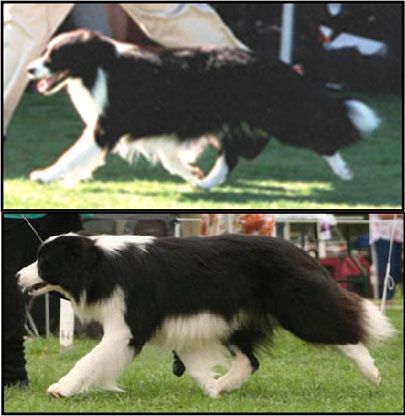
The movement is free, smooth and tireless, with a minimum lift of the feet, conveying the impression of the ability to move with great stealth. The action, viewed from the front, should be straightforward and true, without weakness at shoulders, elbows or pasterns. Viewed from behind the quarters thrust with strength and flexibility, with hocks not close or too far apart. When trotting, the dog's feet tend to come closer together as speed increases, but when the dog comes to rest he should stand four square. Any tendency to stiltedness or to cowhocks or bowhocks is a serious fault.
Additional Information: The movement of the Border Collie is one of the hallmarks of the breed and reading the extended standard on this section is recommended.
Coat
HAIR: Two varieties: Moderately long or Smooth. In both, topcoat dense and medium textured, undercoat soft and dense giving good weather resistance. In the moderately long-coated variety, abundant coat forms mane, breeching and brush. On face, ear tips, forelegs (except for feather), hind legs from hock to ground, the hair is short and smooth.
Additional Information: Body coat of the Border Collie should not be so abundant or curly, as to detract from the graceful outline of the animal. The coat may be straight or have a slight wave, and the complete absence of undercoat is to be regarded as a fault in an adult dog as this will reduce the coats insulating quality. The medium textured top coat gives a waterproofing quality and together with the undercoat will effect the dog’s capacity for enduring working conditions. Bitches are generally not as heavily coated as the dogs. Each colour of coat, including white, tends to have a different texture.
Colour
Variety of colours permissible. White should never predominate.
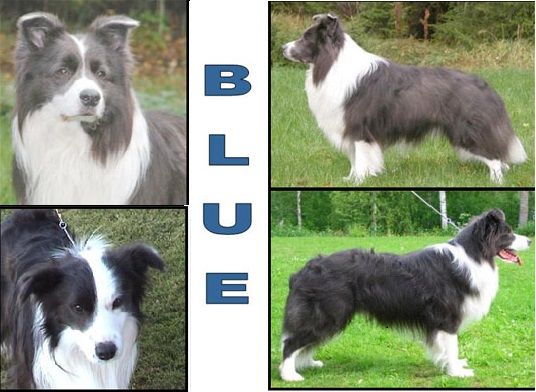
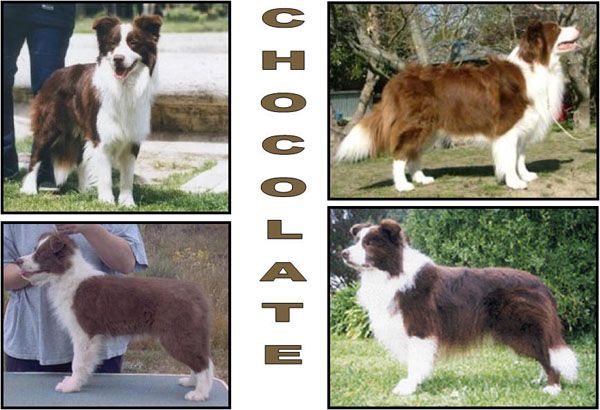
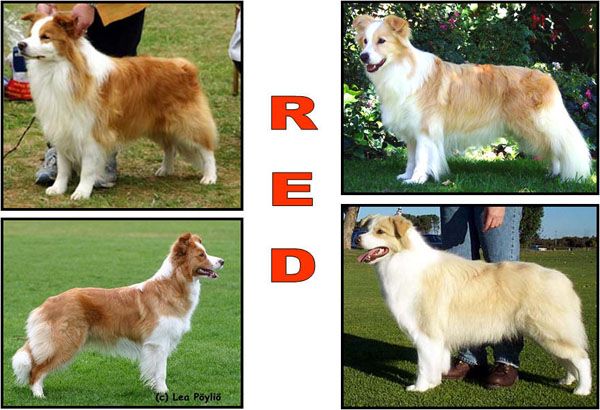
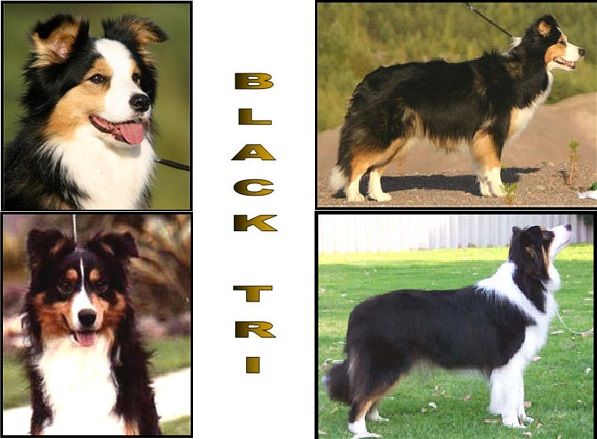
Size
Height: Dogs 48 - 53 cm (approx. 19 - 21 in) at withers.
Bitches 46 - 51 cm (approx. 18 - 20 in) at withers.
Additional Information: Size is not a disqualifying feature and all things being equal, correct conformation should be preferred.
Faults
Any departure from the foregoing points should be considered a fault and the seriousness with which the fault should be regarded should be in exact proportion to its degree.
NOTE
Male animals should have two apparently normal testicles fully descended into the scrotum.
